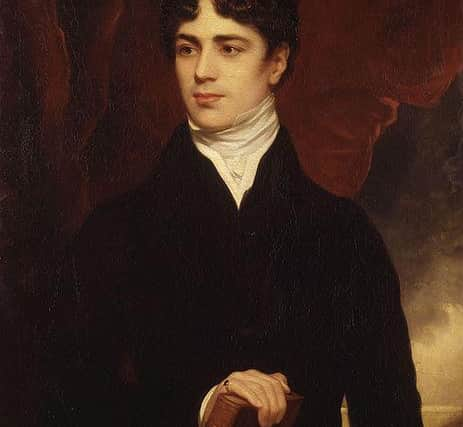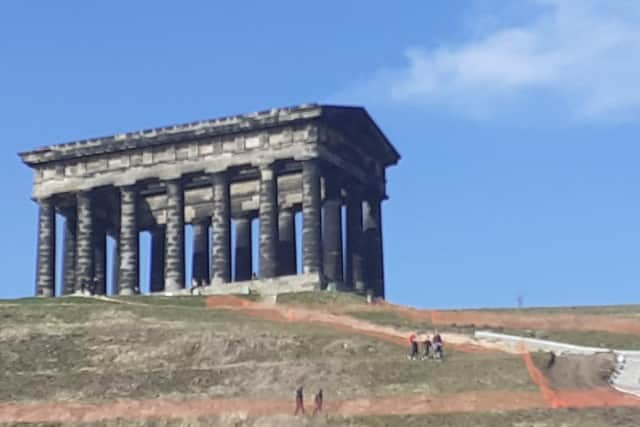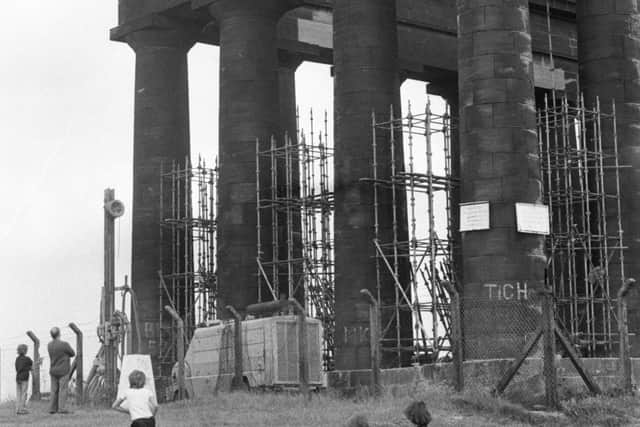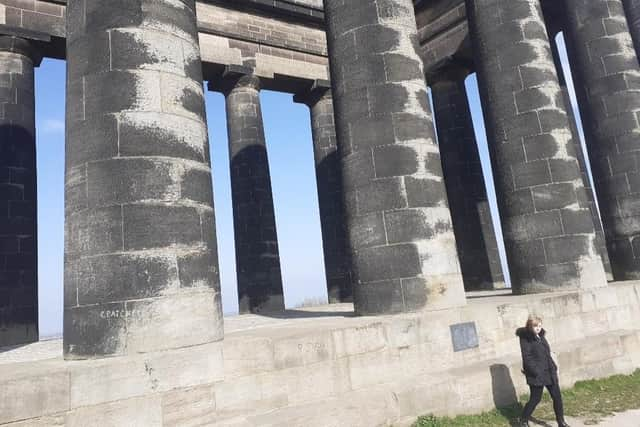The story of Penshaw Monument - the real reason why Sunderland has a huge mock Greek monument on a hill and its links to the Freemasons
and live on Freeview channel 276
When you first spot Penshaw during a long car journey, it means the kids can stop asking when they’ll be home.
It is completely synonymous with the city, so much so that it’s featured on the crest of Sunderland AFC.
Advertisement
Hide AdAdvertisement
Hide AdIn fact when the crest was unveiled in 1996, we were told it included Penshaw Monument to reflect the amount of support for the club from outside the city. This seemed odd as it is only a mile from the nearest section of Sunderland’s border with County Durham, so they were presumably referring to its visibility from far away.


Indeed, it’s probably the most visible landmark in the North East. You can see it from huge swathes of County Durham, you even see it from North Tyneside on clear day and on a very, very, clear day it can be seen from the Cheviot Hills 50 miles away.
But what is it for? Why on earth is there a mock Greek monument on the outskirts of the city?
Why is it there?
The monument is a folly, which is a building serving no other purpose than to be seen. And seen it certainly is.


Advertisement
Hide AdAdvertisement
Hide AdPenshaw Monument isn’t its real name. It’s actually called the Earl of Durham’s Monument after John George Lambton, who was the 1st Earl of Durham. It was built in his honour.
Lambton had been the MP for Durham between 1812 and 1828, he was given a peerage in 1833 and became Governor General of Canada in 1838, he died on the Isle of Wight in 1840.
One of his ancestors was reputedly John Lambton who, in a tale of dubious historical authenticity, slew the child-eating Lambton Worm as celebrated in the 1867 song of the same name.
The first Earl of Durham was a privileged lad, an Eton alumnus who once opined that: “A man might jog along comfortably enough on £40,000 a year,” which is the equivalent of about two million quid in today’s money.


Advertisement
Hide AdAdvertisement
Hide AdDespite him being fairly unremarkable with a tenuous-at-best grasp of reality he, as many old Etonians born into immense wealth and privilege do, rose high in politics.
It may be worth pointing out at this point that Lambton was also a Freemason.
The occasional ill-considered statement aside, he seems to have quite well liked and local people raised £3,000 towards the costs of the monument in his honour when he died.
So four years after his death, the foundation stone was laid by his friend, the Earl of Zetland, on August 28, 1844.


Advertisement
Hide AdAdvertisement
Hide AdA reported 30,000 spectators watched the stone being laid with “customary Masonic honours”, according to Durham Freemasons.
What exactly is it?
It is reputedly a copy of the Temple of Hephaestus, in Athens.
But it isn’t, at best it could be said it is “slightly similar to” the Temple of Hephaestus.
However, it clearly has a Greek influence and it was built in Doric hexastyle, for those who like to sound clever.


Advertisement
Hide AdAdvertisement
Hide AdIt stands 136 metres above sea level atop the highest point in Sunderland. It is 30 metres long, 16 metres wide and 20 metres high. Each of its 18 columns has a two-metre diameter.
All but one of the columns are solid with one containing a spiral staircase to its upper walkway.
The 20th century
The staircase was closed permanently in 1929 after a fifteen-year-old boy fell to his death.
The Echo reported that he was Temperley Arthur Scott of Castle Street, Fatfield.
Advertisement
Hide AdAdvertisement
Hide AdMembers of the public weren’t allowed up the staircase again until 2011 when the National Trust started to offer tours.
The National Trust has looked after the monument since 1939 when it was donated by the 5th Earl of Durham.
By the 1970s, age, and the mining that went on deep below Penshaw Hill, had left the monument somewhat on the wobbly side, so in 1978 it was underpinned and in 1979 part of it was dismantled to replace old lintels with new reinforced concrete ones, which are noticeable due to their buff colouring.
More recently
As of March 2020 new steps to the monument were under construction, but as anyone who has ever climbed to the top knows it has always been necessary to have a certain level of physical fitness to reach the summit of Penshaw Hill.
Advertisement
Hide AdAdvertisement
Hide AdIt is sometimes lit up at night in relevant colours. For example it was bathed in green in January 2020 to mark the 125th anniversary of the National Trust. In 2015 it was lit in the colours of the French tricolour as a show of solidarity following the Paris terrorist attack.
More recently it has been lit in blue to show support for NHS workers.
Around 60,000 people visit the landmark each year and we can safely say that there is more to it than just 18 pillars on a hill.
In these uncertain times, being able to see something so familiar, permanent and eye-catching as Penshaw Monument might just provide us with some much-needed reassurance.